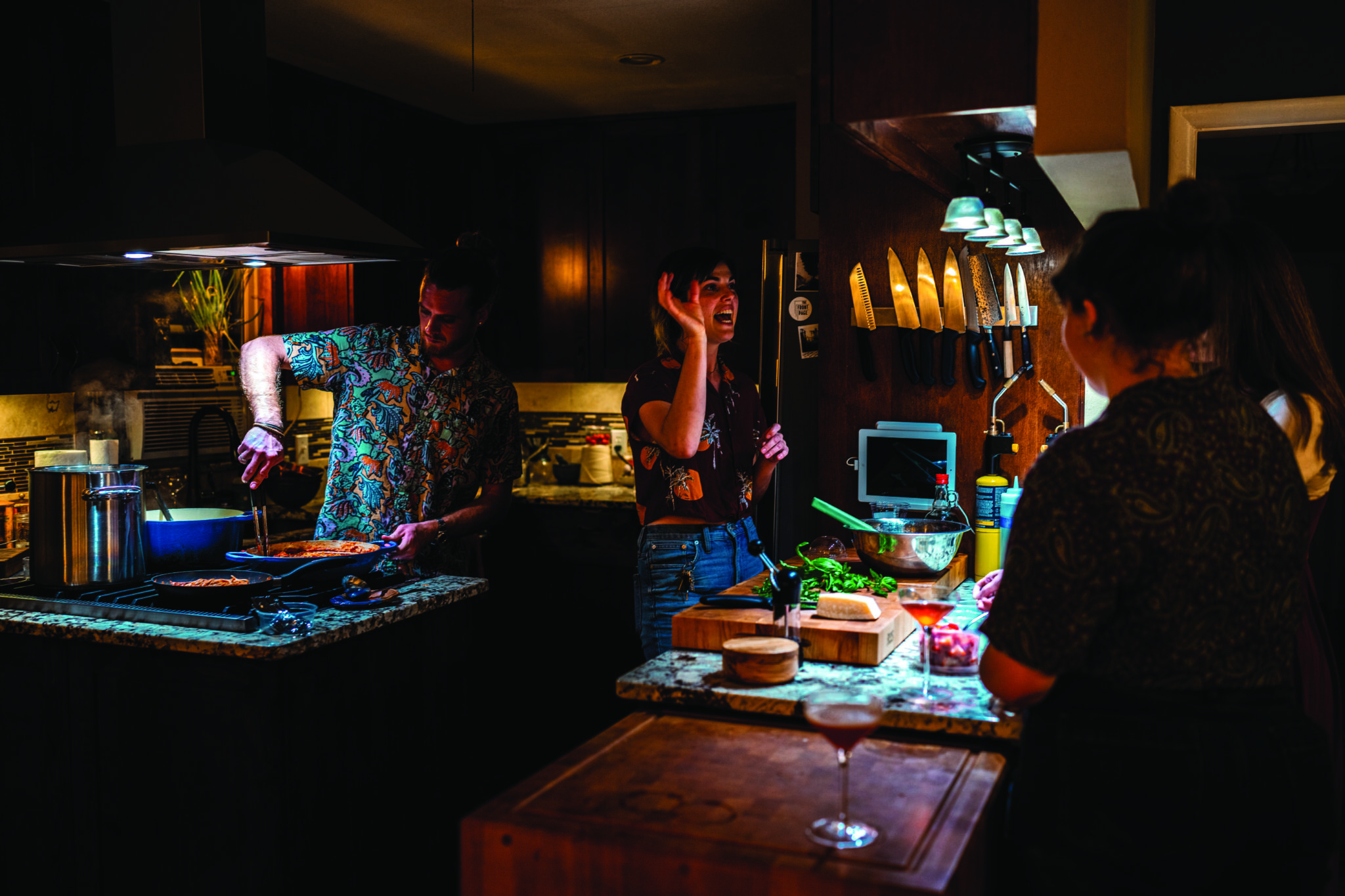What’s the Buzz About Two Hives Honey?

Changing the Bee Conversation
Words by Abby L. Johnson Photos by Eric Morales
Protecting bees is one of those things most of us know is important. But the reasons why, and possibly more importantly, how, are elusive. Tara Chapman, beekeeper and CEO of Two Hives Honey, is on a mission to change that.
Tara is an ardent ambassador of bees. The West Texas native pivoted from an intelligence career in the CIA to full-time honey farmer after several years of dabbling in the art. Her neighbor and owner of Nile Valley Herbs was gracious enough to allow her to keep hives in his backyard where she often hosted bee-curious folks who wanted a peek into the secret world of the captivating insects. Tara saw that this form of agrotourism was of interest to not only her but also to many of their neighbors. After a bit more training in the “incredibly nuanced form of agriculture,” Two Hives Honey was born to educate the public, protect the bees, and produce some damn good local honey.

The Two Hives farm is home to hundreds of thousands of bees. They house 20-25 hives at any given time and plenty of local flora. True to their roots, Two Hives hosts guests ages six and up on hive tours where visitors don the classic hat and veil of a beekeeper to get up close and personal with the bees. Tour guides share the fascinating inner workings of the hive, explaining the roles of each kind of bee and the various stages of their honey-making process. Tara is emphatic when noting that despite the company name. “We are first and foremost beekeepers… We have to make sure that our bees are being cared for properly, and we put their health and well-being above all else. But people love honey. So we say we’re selling honey, but really, we’re selling a love of bees and ecology.” It might seem like a bit of a bait-and-switch, but it’s hard not to be enthralled while learning about the hidden world of honey bees.
After instilling respect for the work of the engrossing pollinators, a sweet treat lies in store for patient tourists at the honey bar. Here, guests can explore the assorted flavors created by different pollination sources throughout the year. To the uninitiated, the significant variance in not only color but tasting notes across different batches may also come as a surprise. The unique array of products stands in stark contrast to the homogenized, monotone honey shelved at the local grocery store. The creamed honey with cinnamon is a particular standout that should not be missed. This smooth concoction is created by applying a special heating process to the honey that takes it from a viscous, sticky substance to more of a butter consistency.

The realization that each batch of honey is essentially one-of-a-kind adds a bit of weight to the taste testing. Considering the bountiful output of massive honey companies’ product, which is blended to create uniformity, the selection at Two Hives instills a sense of reverence for the distinctive labor of love that goes into creating a little jar of golden goodness. After satisfying a sweet tooth, visitors leave with a deep appreciation for the miraculous gift of nature that is the honey bee.
Did you Know?
Honey bees are not native bees; they’re native to Afro-Eurasia. While important, it’s also important to remember to protect our native pollinators. There are over 4,000 species of native bees living in Texas alone, and each plays a significant role in our local ecosystem.
Beekeeper Training
In keeping with their bee-first philosophy, Two Hives trains novice beekeepers, offering a range of services from one-on-one training, group classes, and apprenticeships.
Bee a Pollinator
As for planting for the bees, “think about things like rosemary and sage, because they bloom multiple times throughout the year, and it’s really hard to kill them. They’re super drought tolerant,” Tara explains. It only takes a small time investment to make a yard a native bee haven, and the payoff for the planet is well worth it.
Contact:
7617 Nez Perce Trace
twohiveshoney.com
@twohives









